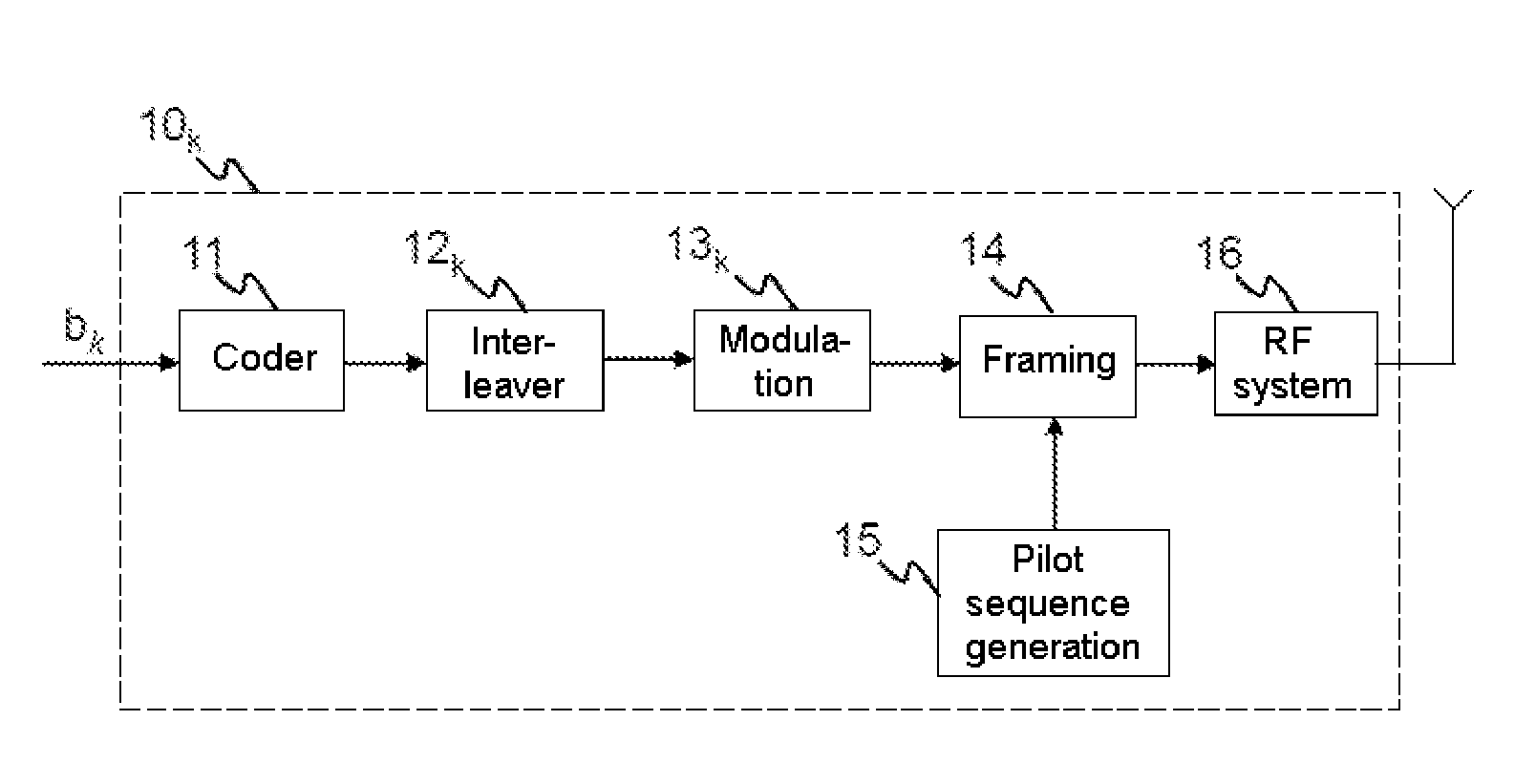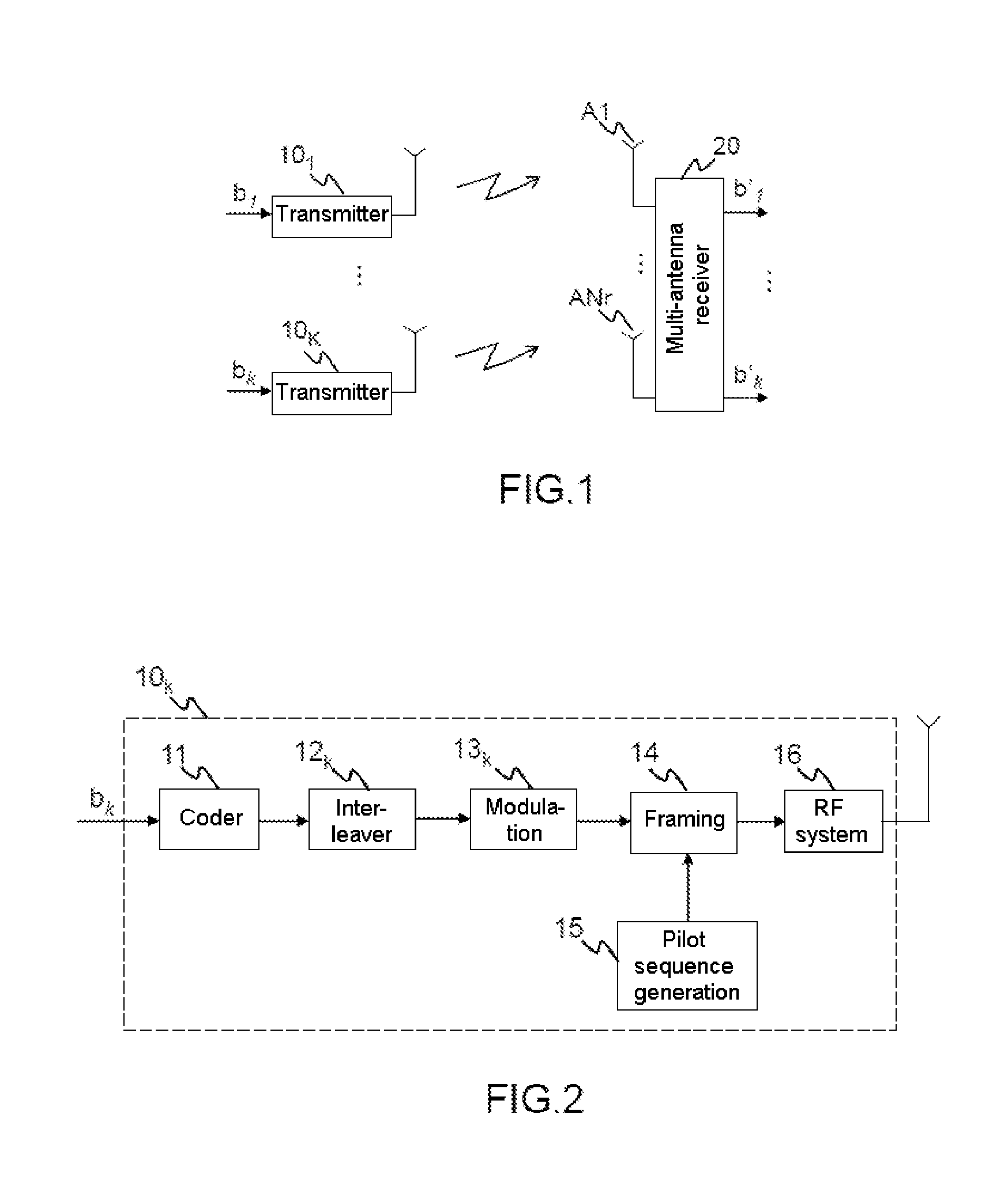Method of widely linear turbo-equalization in a multi-user context and for a multi-channel multi-antenna receiver
a multi-user context and multi-antenna receiver technology, applied in the field of digital radio communication systems, can solve the problem that the known equalization methods do not make it possible, and achieve the effect of reducing interference between multiple users and improving the equalization filter
- Summary
- Abstract
- Description
- Claims
- Application Information
AI Technical Summary
Benefits of technology
Problems solved by technology
Method used
Image
Examples
first embodiment
[0110]The equalization method in accordance with the invention executed by the turbo-equalization module 100 of the receiver 300 is described in more detail next.
[0111]FIG. 4 shows this first embodiment of the turbo-equalization module 100.
[0112]In accordance with the invention, the turbo-equalization module 100 implements the method of widely linear turbo-equalization in the frequency domain on the signals coming from the NR antennas of the receiver.
[0113]From the functional point of view, the objective of the turbo-equalization block 100 is to cancel MUI interference and ISI interference and to equalize the signals in the space-frequency domain.
[0114]A first implementation of the block 100 consists in applying an equalizer 1001,1 . . . 100K,M to each signal symbol received on each of the M wanted sub-carriers from K transmitters simultaneously transmitting a signal to the receiver as represented in FIG. 4.
[0115]Each equalizer 100k,m comprises two main functions, a first function 2...
second embodiment
[0133]Described next is the equalization method in accordance with the invention in which the processing, although functionally equivalent to that described above for the first implementation, has reduced implementation complexity.
[0134]Equation (4) may be rewritten with the following equivalent formulation:
rk,m=r-H(IK⊗FM)EAP[s]+H(IK⊗FM)em+(k-1)MEAP[sk,m]=r-EAP[s]+k,mEAP[sk,m](5)where=H(IK⊗FM)k,m=H(IK⊗FM)em+(k-1)M
[0135]Equation (5) shows that the signal rk,m can be obtained from an estimate of the wanted symbol transmitted via the propagation channel H(IKFM)em+(k−1)MEAP[Sk,m] and corrected by the corrective term q=r−H(IKFM)EAP[s] in which the quantity H(IKFM)EAP[s] is an estimate of the global signal reconstructed from soft information coming from the decoders in the preceding iteration.
[0136]After filtering, the output of the equalizer filter may be expressed as the sum of the estimate of the wanted signal weighted by the coefficient gI,k,mHk,m and its conjugate weighted by the coe...
PUM
 Login to View More
Login to View More Abstract
Description
Claims
Application Information
 Login to View More
Login to View More - R&D
- Intellectual Property
- Life Sciences
- Materials
- Tech Scout
- Unparalleled Data Quality
- Higher Quality Content
- 60% Fewer Hallucinations
Browse by: Latest US Patents, China's latest patents, Technical Efficacy Thesaurus, Application Domain, Technology Topic, Popular Technical Reports.
© 2025 PatSnap. All rights reserved.Legal|Privacy policy|Modern Slavery Act Transparency Statement|Sitemap|About US| Contact US: help@patsnap.com



